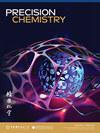Insight into the Adsorption Behavior of Carbon Nanoparticles Derived from Coffee Skin Waste for Remediating Water Contaminated with Pharmaceutical Ingredients
引用次数: 0
Abstract
Coffee skins, a cheap, agricultural waste, were carbonized in a tubular furnace under a nitrogen stream and then ball milled to fabricate coffee skin-carbon-nanoparticles (CCNPs). SEM showed 35.6–41.6 nm particle size. The 26.64 and 43.16 peaks in the XRD indicated a cubic graphite lattice. The FT-IR broadband revealed a 2500–3500 cm−1 peak, suggesting an acidic O-H group. CCNPs possessed a type-H3-loop in the N2-adsorption-desorption analysis, with a surface of 105.638 m2 g−1. Thereafter, CCNPs were tested for ciprofloxacin (CPXN) adsorption, which reached equilibrium in 90 min. CCNPs captured 142.6 mg g−1 from 100 mg L−1 CPXN, and the 5:12 sorbent mass-to-solution volume ratio was suitable for treating up to 75 mg L−1 contamination. The qt dropped from 142.6 to 114.3 and 79.2 mg g−1 as the temperature rose from 20 °C to 35 °C and 50 °C, respectively, indicating exothermic adsorption. CPXN removal efficiency decreased below pH 5.0 and above pH 8.0. Kinetically, CPXN adsorption fits the second-order model and is controlled by the liquid-film mechanism, indicating its preference for the CCNPs’ surface. The adsorption agreement with the liquid-film and Freundlich models implied the ease of CPXN penetration into the CCNP inner shells and the multilayered accumulation of CPXN on the CCNPs’ surface. The negative ∆H° and ∆G° revealed the exothermic nature and spontaneity of CPXN adsorption onto the CCNP. The CCNPs showed an efficiency of 95.8% during four consecutive regeneration-reuse cycles with a relative standard deviation (RSD) of 3.1%, and the lowest efficiency in the fourth cycle was 92.8%.咖啡皮废弃物碳纳米颗粒对药物成分污染水的吸附行为研究
咖啡皮是一种廉价的农业废弃物,在氮气流下的管状炉中碳化,然后球磨制成咖啡皮碳纳米颗粒(CCNPs)。SEM显示粒径为35.6 ~ 41.6 nm。XRD峰26.64和43.16为立方石墨晶格。FT-IR宽带显示一个2500-3500 cm−1的峰,表明是酸性O-H基团。在n2吸附-解吸分析中,CCNPs具有h3型环,其表面积为105.638 m2 g−1。随后,CCNPs对环丙沙星(CPXN)的吸附测试在90 min内达到平衡,CCNPs从100 mg L−1的CPXN中捕获142.6 mg g−1,并且5:12的吸附剂质量与溶液体积比适合处理高达75 mg L−1的污染。当温度从20℃升高到35℃和50℃时,qt分别从142.6下降到114.3和79.2 mg g−1,表明是放热吸附。CPXN去除率在pH 5.0以下下降,在pH 8.0以上下降。在动力学上,CPXN的吸附符合二级模型,并受液膜机制控制,表明其对CCNPs表面的偏好。与液膜模型和Freundlich模型一致的吸附结果表明,CPXN易于渗透到CCNP的内壳中,并且CPXN在CCNP表面具有多层积累。负的∆H°和∆G°表示CPXN吸附在CCNP上的放热性质和自发性。CCNPs连续4个循环的效率为95.8%,相对标准偏差(RSD)为3.1%,第4个循环的效率最低为92.8%。
本文章由计算机程序翻译,如有差异,请以英文原文为准。
求助全文
约1分钟内获得全文
求助全文
来源期刊

Precision Chemistry
精密化学技术-
CiteScore
0.80
自引率
0.00%
发文量
0
期刊介绍:
Chemical research focused on precision enables more controllable predictable and accurate outcomes which in turn drive innovation in measurement science sustainable materials information materials personalized medicines energy environmental science and countless other fields requiring chemical insights.Precision Chemistry provides a unique and highly focused publishing venue for fundamental applied and interdisciplinary research aiming to achieve precision calculation design synthesis manipulation measurement and manufacturing. It is committed to bringing together researchers from across the chemical sciences and the related scientific areas to showcase original research and critical reviews of exceptional quality significance and interest to the broad chemistry and scientific community.
 求助内容:
求助内容: 应助结果提醒方式:
应助结果提醒方式:


